Cinevent 50 — Day 4
 The last day of Cinevent 50 began with Kitty (1945), starring Paulette Goddard and Ray Milland. Since I wrote the program notes for Kitty, I’m going to follow my practice of years past and reproduce those notes here. However, I should mention that my notes for Cinevent were adapted from my 2013 Cinedrome post on this, one of my favorite pictures. So you’ve got a choice: you can read on now, or if you want the full gamut of what I had to say back then, you can click here and skip the next thirteen paragraphs.
The last day of Cinevent 50 began with Kitty (1945), starring Paulette Goddard and Ray Milland. Since I wrote the program notes for Kitty, I’m going to follow my practice of years past and reproduce those notes here. However, I should mention that my notes for Cinevent were adapted from my 2013 Cinedrome post on this, one of my favorite pictures. So you’ve got a choice: you can read on now, or if you want the full gamut of what I had to say back then, you can click here and skip the next thirteen paragraphs.
Paulette Goddard is one of the great also-rans of movie history. As she never tired of saying, she was the front-runner to play Scarlett O’Hara in Gone With the Wind – until some pert little nobody from England came along. Late in life, Goddard told how she was offered the role and threw a party to celebrate. Selznick came, she said, and so did the English actor Laurence Olivier, in town shooting Wuthering Heights for Sam Goldwyn. Olivier (again, according to Paulette) brought along his girlfriend Vivien Leigh, Selznick took one look at her, and that was that.
The story is nonsense, of course. David Selznick didn’t meet Leigh at Paulette’s house, and Paulette never had Scarlett nailed down enough to throw a party over it. But Paulette’s harmless little fable shows how that near-miss haunted her for the rest of her life — through her 1940s peak at Paramount (when she never quite made it into the top rank of Hollywood stars), and all the long years before her death at 79 in 1990, years during which GWTW’s fame grew even as her own dwindled.
There’s another oblique link to Gone With the Wind in Goddard’s career. As everybody knows, while the world waited breathlessly for the movie David Selznick would make of Margaret Mitchell’s novel, Warner Bros. decided to cash in on this vogue for the Old South by dusting off a 1933 Broadway flop about another flirtatious and headstrong southern belle — and Jezebel swept to the screen a year ahead of GWTW.
Fast-forward to 1944, when another novel has readers breathless and every actress in Hollywood rubbing her hands. The book is Kathleen Winsor’s Forever Amber, about an ambitious village girl’s sexual exploits during the reign of Charles II of England. Darryl Zanuck at 20th Century Fox had snatched up the movie rights to this racy, titillating bestseller — and the boys over at Paramount decided to steal a march on Zanuck the way Warners had on Selznick. The beneficiary of their ploy was Paulette Goddard.
The vehicle they chose was Rosamond Marshall’s novel Kitty, which had been published the year before Amber, but with nowhere near the same success. Born in 1902, Rosamond Marshall wrote some 16 novels altogether, but only two of them ever made it to the screen: The Bixby Girls (filmed in 1960 as All the Fine Young Cannibals with Natalie Wood and Robert Wagner) and Kitty.
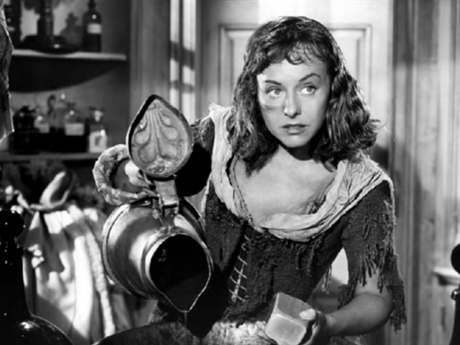 Actually, not all of Kitty made it to the screen. Marshall’s novel was a pretty steamy bodice-ripper by 1940s standards, the tale of a 14-year-old London prostitute blithely sleeping her way up the social ladder in the days of King George III. Kitty (she doesn’t have a last name) gets caught stealing the shoes of the painter Thomas Gainsborough — and he, liking the look of her, invites her into his studio to pose. There, Kitty catches the eye of a ne’er-do-well visitor, Sir Hugh Marcy, who takes her home with him and introduces her to the pleasures of orgasmic sex. Sir Hugh and his gin-sodden aunt Lady Susan take Kitty under their wings, passing her off as the orphaned child of a dear friend and subjecting her to a crash course in proper speech and manners. Kitty blooms under their tutelage and her lovers multiply.
Actually, not all of Kitty made it to the screen. Marshall’s novel was a pretty steamy bodice-ripper by 1940s standards, the tale of a 14-year-old London prostitute blithely sleeping her way up the social ladder in the days of King George III. Kitty (she doesn’t have a last name) gets caught stealing the shoes of the painter Thomas Gainsborough — and he, liking the look of her, invites her into his studio to pose. There, Kitty catches the eye of a ne’er-do-well visitor, Sir Hugh Marcy, who takes her home with him and introduces her to the pleasures of orgasmic sex. Sir Hugh and his gin-sodden aunt Lady Susan take Kitty under their wings, passing her off as the orphaned child of a dear friend and subjecting her to a crash course in proper speech and manners. Kitty blooms under their tutelage and her lovers multiply.
So much for the novel. Needless to say, between publication and the release of Paramount’s film in 1945, Rosamond Marshall’s story underwent a major overhaul at the hands of writers Karl Tunberg and Darrell Ware and director Mitchell Leisen. For starters, a prostitute as a heroine, let alone a 14-year-old one, was out of the question. So Kitty was advanced to somewhere beyond the age of consent — and relieved of the need to have anything to consent to.
More important, Tunberg and Ware (with perhaps the input of director Leisen) realized what Rosamond Marshall evidently did not: that next to Kitty herself, by far the book’s most interesting characters are the cad Sir Hugh and the drunkard Lady Susan. In the novel, Lady Susan is dead halfway through and Sir Hugh disappears with far too many pages left to read. In the screenplay, both are kept around, to far better effect.
Ware and Tunberg’s other solution to Kitty’s story problems — and its conflicts with the Production Code — was inspired: They expanded the scenes of Sir Hugh and Lady Susan schooling Kitty in ladylike deportment, thus changing Kitty’s plot from the rise of an adolescent hooker to an adaptation of George Bernard Shaw’s Pygmalion, with Kitty (Paulette Goddard) as Eliza Doolittle, Sir Hugh Marcy (Ray Milland) as Henry Higgins, and Thomas Gainsborough (Cecil Kellaway) as Col. Pickering. Shaw’s Mrs. Higgins became Lady Susan, and the role was entrusted to that grand dowager of the British and Broadway stages, Constance Collier. (Shaw’s reaction to all this is unrecorded. He may have been amused – or he may never have even seen the picture. He almost certainly never read Marshall’s novel.)
Kitty is billed as “A Mitchell Leisen Production.” In the mid-’40s Leisen (pronounced “Leeson”) was Paramount’s arbiter of elegance, having begun his career designing sets and costumes for Cecil B. DeMille, the only Paramount director who outranked him in prestige. Leisen has taken a beating from auteurists in recent decades, mainly because Billy Wilder and Preston Sturges both claimed to have turned director out of dissatisfaction with Leisen’s treatment of their scripts. But an unbiased look at the pictures Leisen made of Sturges’s screenplays for Easy Living (1937) and Remember the Night (’40), or Wilder’s (and Charles Brackett’s) for Midnight (’39) and Hold Back the Dawn (’41), makes them sound like a couple of whining prima donnas. We should all be grateful that Billy Wilder and Preston Sturges moved into directing their own stuff, but they had no grounds whatever to complain about Mitch Leisen.
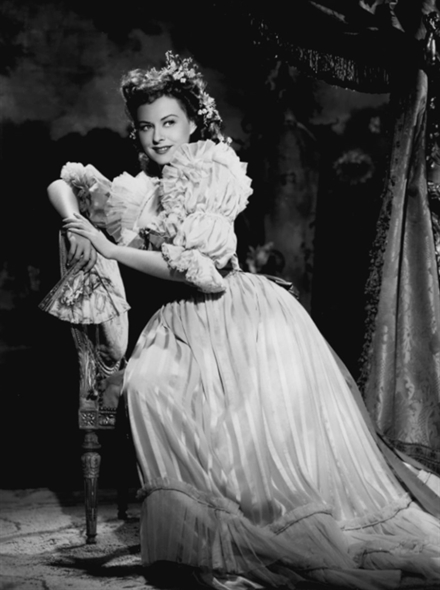 David Chierichetti’s 1995 book Mitchell Leisen: Hollywood Director does much to correct this injustice to Leisen, but its information on Kitty is sketchy and unreliable — when it’s not downright false. Chierichetti says it’s set in “Restoration Era England” when it takes place 125 years later. Leisen himself, interviewed, says: “I spent two years researching Gainsborough and the way he painted. We determined that the picture took place in 1659, and there’s nothing in the picture that was painted by him after that year.” Wrong again. Gainsborough wasn’t even born until 1727, and an opening title card explicitly sets the story in 1783. Clearly, Leisen (who died in 1972) had not seen the picture recently when he discussed it with Chierichetti, nor had Chierichetti when he wrote about it. And Leisen never spent two years in research. Kitty was ready for release by the end of 1944 but was held up a full year by Paramount’s backlog of product; two years of research would have had Leisen beginning in 1942, a year before the novel was published.
David Chierichetti’s 1995 book Mitchell Leisen: Hollywood Director does much to correct this injustice to Leisen, but its information on Kitty is sketchy and unreliable — when it’s not downright false. Chierichetti says it’s set in “Restoration Era England” when it takes place 125 years later. Leisen himself, interviewed, says: “I spent two years researching Gainsborough and the way he painted. We determined that the picture took place in 1659, and there’s nothing in the picture that was painted by him after that year.” Wrong again. Gainsborough wasn’t even born until 1727, and an opening title card explicitly sets the story in 1783. Clearly, Leisen (who died in 1972) had not seen the picture recently when he discussed it with Chierichetti, nor had Chierichetti when he wrote about it. And Leisen never spent two years in research. Kitty was ready for release by the end of 1944 but was held up a full year by Paramount’s backlog of product; two years of research would have had Leisen beginning in 1942, a year before the novel was published.
But there is one point on which Chierichetti is absolutely right: Kitty “was precisely the kind of picture Leisen could do better than anybody else, and its mixture of mannered comedy and gutsy drama suited him perfectly.” The picture is a sumptuous feast, evoking 18th century London as sharply as an engraving by William Hogarth. It’s a pity the picture couldn’t have been made in Technicolor — thus evoking Gainsborough rather than Hogarth — but Paramount was notoriously cheap on that score. Even as it stands, Kitty richly deserved its Oscar nomination for art direction — for Hans Dreier and Walter Tyler; the production design was by Raoul Pene Du Bois. (Kitty lost to Fox’s Anna and the King of Siam.)
Over and above its gorgeous look and elegent style, Kitty gave Paulette Goddard the opportunity of a lifetime, and she came through with the performance of her career. Always a conscientious actress rather than an inspired one, Goddard worked hard on her Cockney accent, coached by Phyllis Loughton and Connie Emerald (mother of Ida Lupino), and, as the new-and-improved Kitty, by Constance Collier, who tutored Goddard/Kitty as much off screen as Lady Susan did on. There’s not a false note in Goddard’s performance, nor in any of the rest of the cast, which was surely one of the largest and best either she or Leisen ever worked with: Milland (against-all-odds charming as Sir Hugh, a more detestable rotter than Henry Higgins ever was), Collier, Kellaway, Patric Knowles (as Kitty’s version of Freddy Eynsford-Hill), Dennis Hoey (as Kitty’s first husband), Reginald Owen (as her second), and the ever-popular Eric Blore as Sir Hugh and Lady Susan’s querulous manservant Dobson. (Blore has one of the best lines in the picture – but I won’t spoil it.)
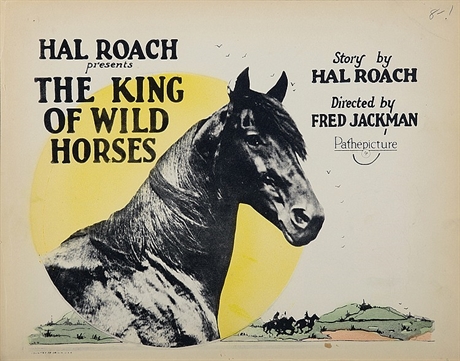 After lunch we got the last three chapters of The Masked Marvel, and we finally learned who the Masked Marvel really was (as if it mattered; I never could keep the candidates straight — I can’t even remember which one wound up dying in that L.A. beanfield).
After lunch we got the last three chapters of The Masked Marvel, and we finally learned who the Masked Marvel really was (as if it mattered; I never could keep the candidates straight — I can’t even remember which one wound up dying in that L.A. beanfield).
Then came The King of Wild Horses (1924), which showcased one of those stars that almost every film buff has heard of, but (I’ll bet) very few have ever seen: Rex the Wonder Horse. Discovered God knows where by producer Hal Roach, he had a pretty good career for a while — for a horse, anyhow, especially a horse who wasn’t partnered with some human cowboy star. This particular picture, Rex’s debut, had him as the alpha male in a herd of wild horses, sought by a cowboy (Léon Bary) who wants to catch and tame him, while the cowpoke’s rancher boss (Sidney De Gray) tries to learn who keeps rustling his stock. The two plotlines eventually converge, naturally, and work themselves out pretty well. Rex was the main attraction, and there’s no denying he had star quality, clearly intelligent and seemingly game for almost anything; it’s easy to understand how he came to rival, in his day, the popularity of Rin Tin Tin. Another point of interest was the presence in the cast of Charley Chase in a straight dramatic role (and, to avoid misleading audiences, billed as Charles Parrott, his real name).
Beauty for Sale (1933) was an energetic pre-Code from MGM and director Richard Boleslawski, from a novel by paleo-romance novelist Faith Baldwin. Madge Evans played a working girl at an upscale beauty salon catering to wealthy women with nothing better to do than sit around yakking at each other with mud on their faces. Various sexual shenanigans ensue: Evans wanders into an affair with the husband (Otto Kruger) of one of her more empty-headed clients (Alice Brady); her co-worker and best friend (Una Merkel) drains a sugar daddy (Charley Grapewin) for every dime she can get; another co-worker (Florine McKenney) carries on a forbidden-fruit romance with the pampered son (Phillips Holmes) of the salon’s owner (Hedda Hopper) and winds up pregnant.
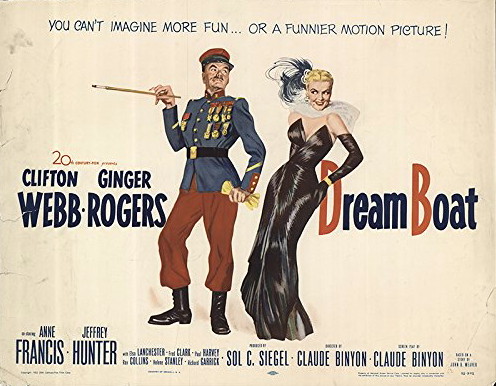 Beauty for Sale was nicely done, and the print was handsome, but it was overshadowed by the picture that followed it, which in its turn closed out the weekend with one last highlight. This was Dreamboat (1952), a marvelous spoof of Hollywood, television, and academia that probably represents the pinnacle of writer/director Claude Binyon’s career.
Beauty for Sale was nicely done, and the print was handsome, but it was overshadowed by the picture that followed it, which in its turn closed out the weekend with one last highlight. This was Dreamboat (1952), a marvelous spoof of Hollywood, television, and academia that probably represents the pinnacle of writer/director Claude Binyon’s career.
No doubt that name sounds vaguely familiar. Binyon (1905-78) was a journeyman writer whose career, if it never quite scaled the heights of a Preston Sturges or Billy Wilder, was still nothing to sneeze at. Starting out as a journalist, he worked at Variety for several years in the late ’20s and early ’30s, where some say he was responsible for the famous headlines WALL STREET LAYS AN EGG and STIX NIX HICK PIX. True credit on those is understandably disputed; whatever the case, by 1932 he had transitioned from writing about movies to writing for them. Over the years his scripts included Sing, You Sinners (1938); Holiday Inn (’42); This Is the Army (’43); Rally ‘Round the Flag, Boys! (’58); North to Alaska (’60) — and, it must be said, Aaron Slick from Punkin Crick (’52) and the 1960 all-star roadshow megabomb Pepe.
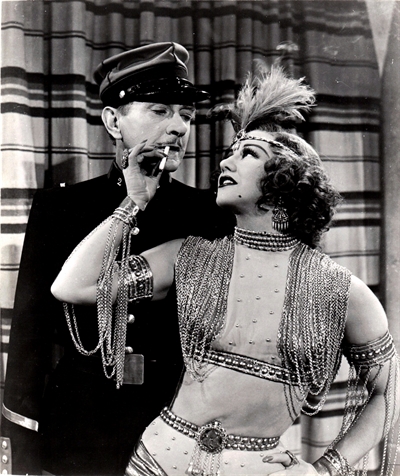 Binyon occasionally directed his own scripts, and with Dreamboat he was at the top of both games. Clifton Webb played Thornton Sayre, a stuffy, acerbic college professor whose students call him “Old Ironheart” behind his back. The advent of television has uncovered a secret long buried in his past: He used to be a silent-screen heartthrob known as Bruce Blair (imagine a combination of Douglas Fairbanks and John Gilbert), and now those obsolete relics of a bygone day are turning up on TV, hosted by his former co-star Gloria Marlowe (Ginger Rogers). The movies have created a sensation, upsetting the stuffy trustees of his college, so he strikes out for New York to get an injunction to stop this invasion of his privacy, taking along his daughter Carol (Anne Francis), who is well on her way to becoming the same kind of stick-in-the-mud killjoy that he is. While Gloria and her TV producer (Fred Clark) try to charm Prof. Sayre out of his dudgeon, Carol is squired around town by the producer’s assistant (Jeffrey Hunter). In the process, father learns that reversing the wheels of showbiz is easier said than done, while daughter learns there’s more to having a good time than working on a thesis to “challenge the existence of Homer as an individual.” Dreamboat was a witty delight every inch of the way, poking fun at show business and academia with both barrels and scoring a bullseye every time. It was also a testament to 20th Century Fox’s ongoing ingenuity in finding vehicles to showcase the unorthodox but inimitable talents of Clifton Webb. Those of use who stayed through to the end of the weekend were well-rewarded for our loyalty.
Binyon occasionally directed his own scripts, and with Dreamboat he was at the top of both games. Clifton Webb played Thornton Sayre, a stuffy, acerbic college professor whose students call him “Old Ironheart” behind his back. The advent of television has uncovered a secret long buried in his past: He used to be a silent-screen heartthrob known as Bruce Blair (imagine a combination of Douglas Fairbanks and John Gilbert), and now those obsolete relics of a bygone day are turning up on TV, hosted by his former co-star Gloria Marlowe (Ginger Rogers). The movies have created a sensation, upsetting the stuffy trustees of his college, so he strikes out for New York to get an injunction to stop this invasion of his privacy, taking along his daughter Carol (Anne Francis), who is well on her way to becoming the same kind of stick-in-the-mud killjoy that he is. While Gloria and her TV producer (Fred Clark) try to charm Prof. Sayre out of his dudgeon, Carol is squired around town by the producer’s assistant (Jeffrey Hunter). In the process, father learns that reversing the wheels of showbiz is easier said than done, while daughter learns there’s more to having a good time than working on a thesis to “challenge the existence of Homer as an individual.” Dreamboat was a witty delight every inch of the way, poking fun at show business and academia with both barrels and scoring a bullseye every time. It was also a testament to 20th Century Fox’s ongoing ingenuity in finding vehicles to showcase the unorthodox but inimitable talents of Clifton Webb. Those of use who stayed through to the end of the weekend were well-rewarded for our loyalty.
 Now I’d like to say a few words about Anne Francis. As Dreamboat romps across the screen, her Carol Sayre transforms from a buzzkill bookworm who looks about five days past puberty into something like the Anne Francis we all remember. She had a long and worthy career, with 169 credits between 1947 and 2004; she was always a welcome presence, and I’d venture to guess everyone who ever saw her in a movie or on TV remembered her fondly. Yet she never quite became a real star; I doubt if she ever got her name above a title, and she got top billing only in her one-season TV series Honey West. I wonder why?
Now I’d like to say a few words about Anne Francis. As Dreamboat romps across the screen, her Carol Sayre transforms from a buzzkill bookworm who looks about five days past puberty into something like the Anne Francis we all remember. She had a long and worthy career, with 169 credits between 1947 and 2004; she was always a welcome presence, and I’d venture to guess everyone who ever saw her in a movie or on TV remembered her fondly. Yet she never quite became a real star; I doubt if she ever got her name above a title, and she got top billing only in her one-season TV series Honey West. I wonder why?
There’s a line in John Fowles’s novel The Magus that has always stayed with me. The title character, Maurice Conchis, a mysterious middle-aged semi-recluse living on the (fictitious) Greek island of Phraxos, is speaking to the narrator, burnt-out teacher Nicholas Urfe, about Lily, the young woman who lives with Conchis. “Lily is beautiful, is she not? In fact, she is dangerously close to being perfect, and perfectly beautiful women are always boring.” (In the disastrous 1968 movie, Lily was played by Candice Bergen. ‘Nuff said.)
Maybe that’s what held Anne Francis back. Not that she was ever boring — far from it — but she was awfully close to being perfectly beautiful. All of the screen’s greatest beauties, it seems, had some flaw: their eyes were too large, or too small, or too far apart, or they had only one good side, or they were nothing without a camera. Anne Francis had nothing like that. There was that little mole near the right corner of her mouth, but does that really count as a flaw? Personally, I think it only put her that much closer to perfection. No wonder her role in Funny Girl (1968) was slashed to practically nothing; Barbra Streisand didn’t need that kind of competition. And no wonder one of her best (and best remembered) performances was on The Twilight Zone, as a department store mannequin allowed to come to life for a month and walk among the mortals.
Well, that’s one of the things I like about Cinevent. Along with the reunions with longtime and like-minded friends, the dealers’ room, the screenings, there are reflections like that that spring to mind. And you never know what’s going to bring one on. On to Memorial Day 2019!
